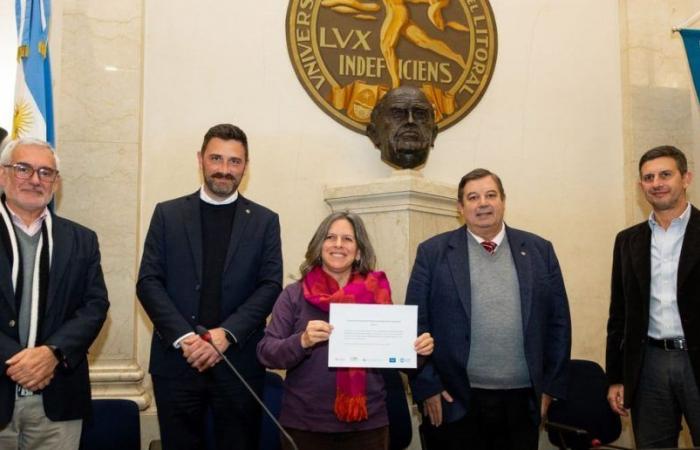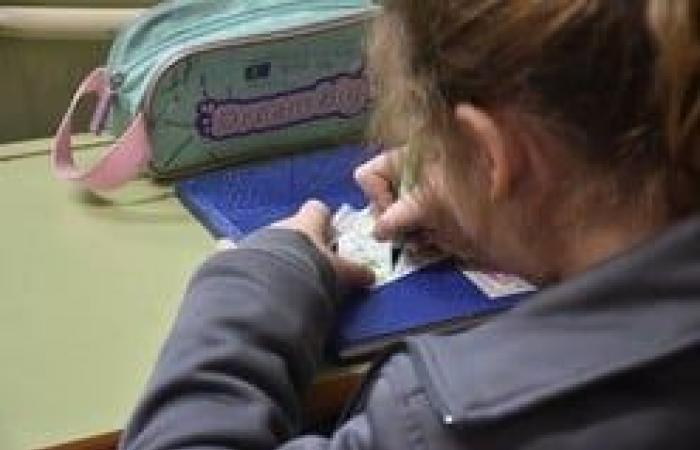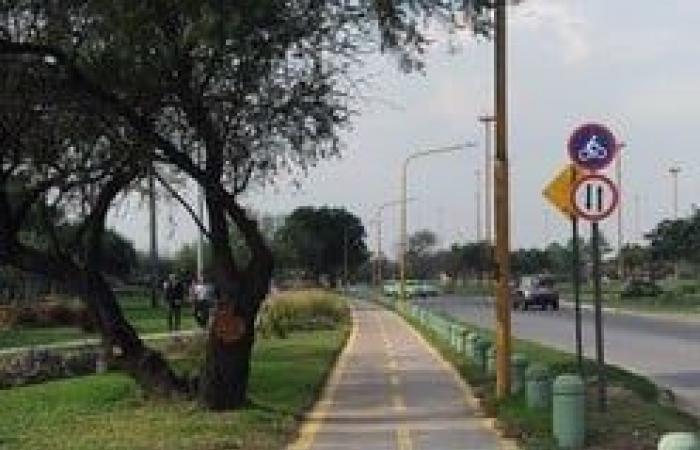13:47
The National University of the Litoral (UNL) together with Sancor Seguros, the Habitat and Development Foundation, the Chamber of Deputies and the Ministry of Environment and Climate Change of the Province of Santa Fe will finance two projects for the conservation of the natural heritage of the province of Santa Fe for a total of $2,800,000.
The subsidy award ceremony, within the framework of the fifth call for proposals, took place on Tuesday, June 25, at the UNL Higher Council and was attended by the rector of UNL, Enrique Mammarella; the Minister of Environment and Climate Change of the Province of Santa Fe, Enrique Estévez; the vice president of the Habitat and Development Foundation, Pablo Tabares; and, representing Sancor Seguros, Willy Borgnino.
“For the National University of the Litoral, it is a pilot, demonstrative proposal that aims to generate critical mass and synergy with different public and private social actors; with satisfaction we see the growth of this initiative that has acquired visibility for the groups that work on the matter, to municipalities and communes since of all the regions into which the province of Santa Fe is divided, only one area does not have projects in development or completed,” said Mammarella. And he added: “the challenge for the future is that the Fund for the Conservation of Natural Heritage stops being a proposal from a group of institutions, to which we thank them but we hope that it becomes a network in territory, of teams and of proposals.” ; that they work, get to know each other and share experiences and take root in the territory. This is the commitment that we must all assume.”
“We know of the UNL’s commitment to caring for the environment, and I consider that these types of initiatives are fundamental due to the environmental crisis we are experiencing marked by climate change, environmental pollution and the significant loss of biodiversity. From the province of Santa Fe We implemented the Yolanda Law to have knowledge and tools so that when making a decision, public officials take environmental issues into account,” said Estévez.
“The importance of the Fund for the Conservation of Natural Heritage is that although it is small, it plays a relevant role at the provincial level due to the interest it arouses, given that in its fifth edition there are 22 projects that applied to obtain financing,” Tabares indicated and continued: “Secondly, it shows us all the nature conservation initiatives that exist in the province of Santa Fe, fundamental information for researchers, managers, among other social actors who want to carry out a certain public policy.”
“For Sancor Seguros it is a pleasure to integrate the Natural Heritage Fund of the Province of Santa Fe because our institution has a strong business responsibility and is, in this sense, committed to caring for the environment; in other words, it is in its business DNA,” Borgnino stressed.
Selected projects
Among the initiatives selected in this fifth edition of the Natural Heritage Conservation Fund of the province of Santa Fe, on the one hand, is the project: “Unearthing a mystery of underground heritage: the hidden rodents of Santa Fe”, under the direction Andrea Previtali and, on the other, “Villa Gobernador Gálvez Natural Reserve”, directed by Sabrina Portillo.
Andrea Previtali has a degree in Biological Sciences from the National University of Río Cuarto (UNRC). Ph.D. in Biological Sciences, at the Northern Illinois University (NIU)-DeKalb, IL, USA. She is an independent researcher at Conicet, with a workplace at the Faculty of Humanities and Sciences of the Universidad Nacional del Litoral (FHUC-UNL) ; She studies the ecology of zoonotic diseases in the coastal area of Santa Fe. Together with Dr. Ivanna Tomasco, Dr. Eva Rueda, Dr. Celeste Medrano, Dr. Tatiana Sánchez, Dr. Cecilia Lanzone and the undergraduate students in Biodiversity, Nerea Alovatti, Rocío Sánchez, Sabrina González and Agustín Machado They carry out the project: “Unearthing a mystery of the underground heritage: the hidden rodents of Santa Fe.”
The general objective of the proposal is “to study in an interdisciplinary manner the tucu-tucus populations of the province of Santa Fe, obtaining ecological, genetic and anthropological information that contributes to the evaluation of their conservation status,” says Previtali and adds “the tucu-tucus are rodents that belong to the genus Ctenomys, in which 67 species are recognized, most of them Argentine, originating in less than 2 million years, tucu-tucus have not been studied in Santa Fe since the sixties of the last century. “Therefore, there is currently no data on their populations.”
 See also42% of Santa Fe residents said they were in debt
See also42% of Santa Fe residents said they were in debt “Rodents of the genus Ctenomys are called “hidden” for their underground habits. They are also called “tucu-tucus” or “tuco-tucos” for the sound they emit, or “Shiporó” in Mocoví and “Anguyá” in Guaraní. They are rodents endemic to South America and modify the ecosystem with their extensive burrows, increasing biodiversity. Two species of Ctenomys have been recorded in the province of Santa Fe: C. “yolandae”, whose description is pending and there is insufficient data to categorize its status. conservation, and C. argentinus, categorized as “near threatened,” Previtali clarifies.
“They are considered “bioengineers” because they modify the ecosystem they inhabit, facilitating the survival of other species and, therefore, increasing biodiversity,” emphasizes Previtali.
“The environment they inhabit has undergone anthropogenic transformations and natural disasters. In addition, in many places they are actively combating them because they are considered harmful. Therefore, it is urgent to increase knowledge of these species to be able to evaluate the conservation status of their populations and contribute to the development of conservation policies,” he emphasizes.
 See alsoSanta Fe added new bike paths and access to Ciudad Universitaria
See alsoSanta Fe added new bike paths and access to Ciudad UniversitariaNatural reserve
Sabrina Portillo is a Chemical Engineer (UTN-Rosario), teacher-researcher at the National Technological University, based in Rosario, specialist in Environment and Master in Food Technology (UTN-Rosario). In addition, she is Undersecretary of Environment of the Municipality of Villa Gobernador Gálvez and feels proud to be a citizen of Villa Galvez.
The general objective of the project is to “create the necessary measures to conserve the Villa Gobernador Gálvez Natural Reserve, generating comprehensive protection of the ecosystem so that, through the intervened management, the preservation and maintenance of the original natural environment and its biodiversity,” says Portillo.
In this sense, its specific objectives include, firstly, “developing and implementing the Management Plan, drafted by experts from the academic community and with contributions from the community of influence; secondly, placing railings to comply with the necessary safety measures for guided tours through historical routes currently closed due to the risk of falling through the ravine into the Saladillo Stream; and, finally, preparing and placing descriptive signage of the flora and fauna found throughout the reserve,” says Portillo.









